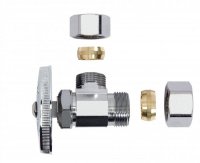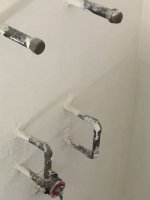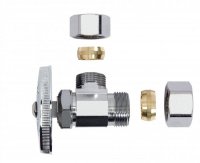Rdura
New Member
My plumber installed interior copper as seen in photo 1, and external copper in photo 2. Internally there will be a sink with a wall mount hot/cold faucet. I'm hoping someone can explain the purpose of the lower 1/4 inch pipes ... do they remain as perhaps a water hammer mitigation design?
Externally, I will have an electric h/w heater, but not sure what to make of the pipes making a "U" shape. Is it just a convenient way to cap off the copper until the heater is plumbed, and if yes, can someone let me know which pipe is "water in" to the heater and which on is "water out" of the heater. I am guessing the pipe on the right feeds the heater, and the pipe of the left is the hot water feeding the shower and sinks,
I'm hoping to plumb the hw heater myself. For perspective, the space of this tiny structure is 120 sq ft.


Externally, I will have an electric h/w heater, but not sure what to make of the pipes making a "U" shape. Is it just a convenient way to cap off the copper until the heater is plumbed, and if yes, can someone let me know which pipe is "water in" to the heater and which on is "water out" of the heater. I am guessing the pipe on the right feeds the heater, and the pipe of the left is the hot water feeding the shower and sinks,
I'm hoping to plumb the hw heater myself. For perspective, the space of this tiny structure is 120 sq ft.



